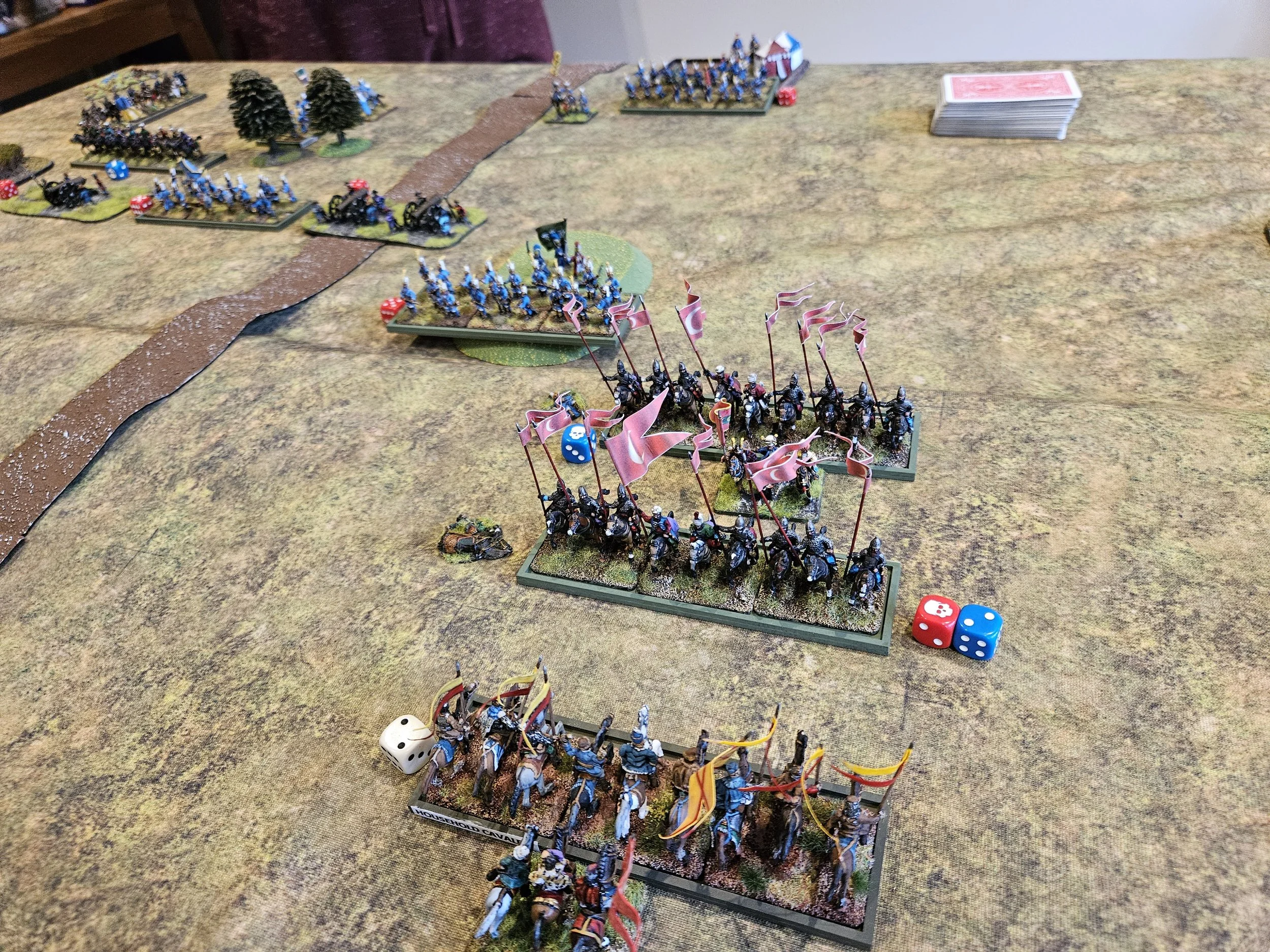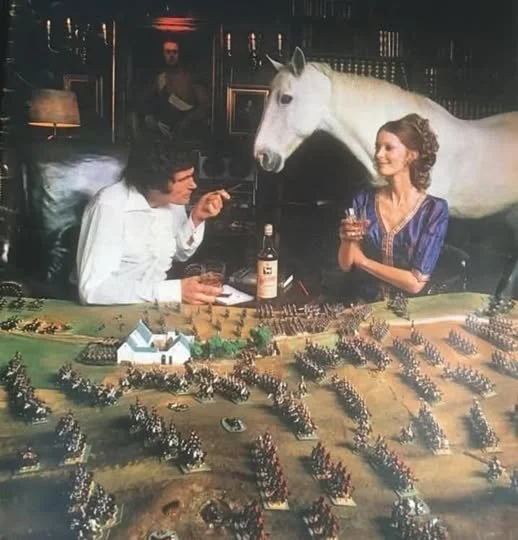FK&P AAR: Transylvanians vs Ottomans
/With the help of friend Rob, I had finally managed to get my 17th Century Ottoman force ready for combat. t had been a long haul: the initial Janisseries painted by Rob, the cavalry painted by Matt Slade of Glenbrook Games, then the odds and sods needed to finally fill the force out finished by Rob and I. Their first outing would have friend Neil commanding them as they faced off against the Transylvanians commanded by Yours Truly.
I was a tad concerned about the prospects for the Transylvanians: my infantry were decidedly inferior to the Ottoman Janisseries, and unless I could get my light cavalry dancing around the field, the Turkish Sipahis were going to run right over my horse!
Accordingly, I placed my lights on the wings, sent my infantry into the small village just in front of my start position, and hoped for the best in the centre where my Household Cavalry were facing the Ottoman elite cavalry.
One advantage that I did have was that although Neil is a veteran wargamer and familar with To The StrongestI, this was his first game of For King & Parliament.
The game opened with me taking the fight to the enemy and advancing forward strongly across the whole front except where my Haiduks had occupied the village.
On the right flank, my superiority in light horse enabled me to get a unit around the side of the Ottoman main line, meaning that they could turn and assualt the Turks from front and side.
I also managed to do the same on the right hand side of the field, where my light cavalry effectively managed hold off the Ottoman light cavalry there and counter any Ottoman movement against my weak infantry.
Back to the right flank, where my lights had now effectively cleared the enemy cavalry away, and could think about heading into the center to help.
That left the centre, where my Household and Enlisted Cavalry faced up to the Ottoman Sipahis.
This looked quite serious, as the Sipahis are seriously good troops, but the success of my lights out on the right meant that Neil had to divert some of his cavalry to cover his flanks.
It was a brutal melee, with the Sipahis initially having the upper hand, but dealing with my lights on the right kept siphoning off both their attention and resources: first one squadron was sent left to shore things up, then another etc
All this meant that my Household and Enlisted cavalry were able to recover from the inital clash and then fight back hard. The Sipahis began to give way, with a trickle to the rear becoming a flood, and the battle was mine!
It had been a great game. The Transylvanians, for a change, managed to use their light horse with great success, totally blocking the left wing and allowing the centre to be won by draining Ottoman resource onto the right wing.
Even better, there was time for a re-match…but that’s another story!








































